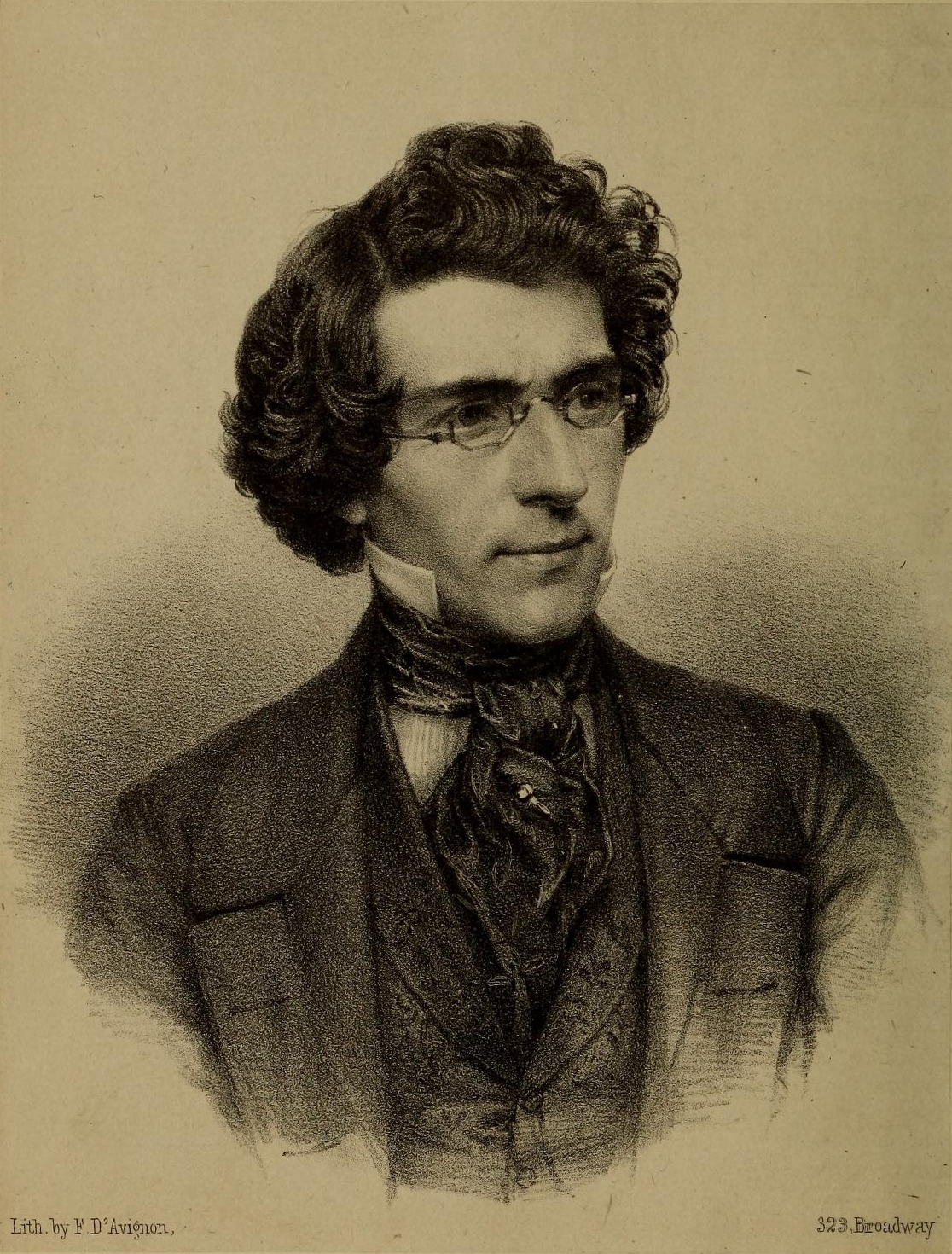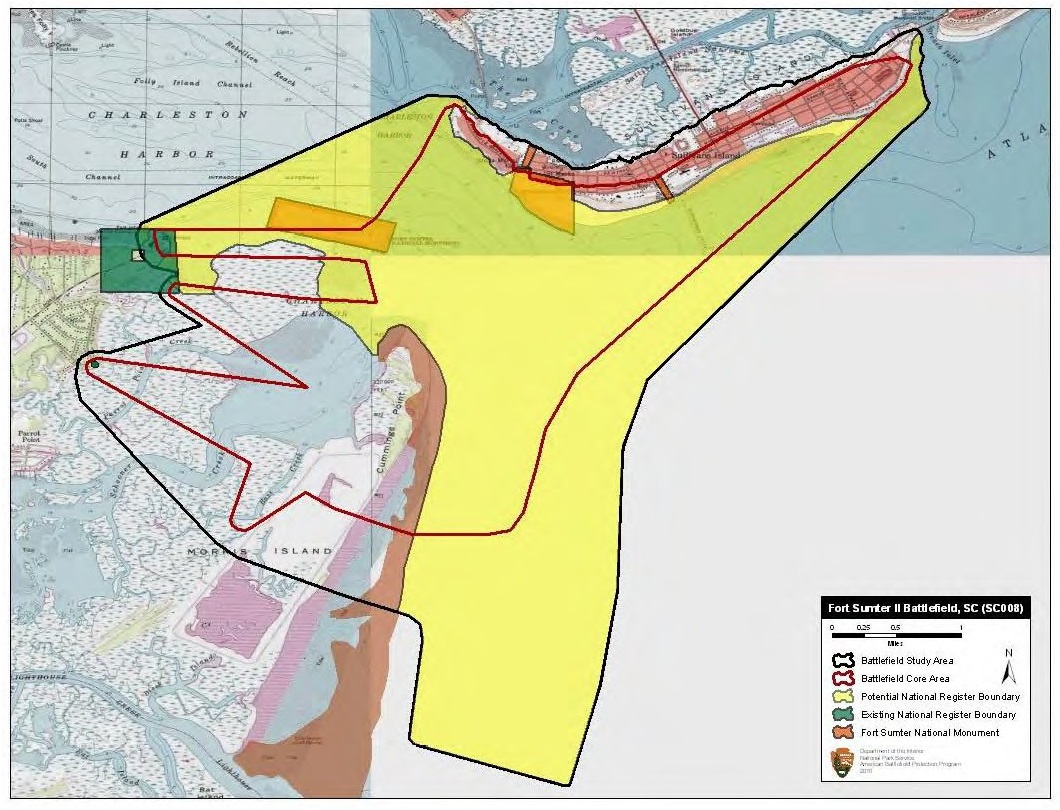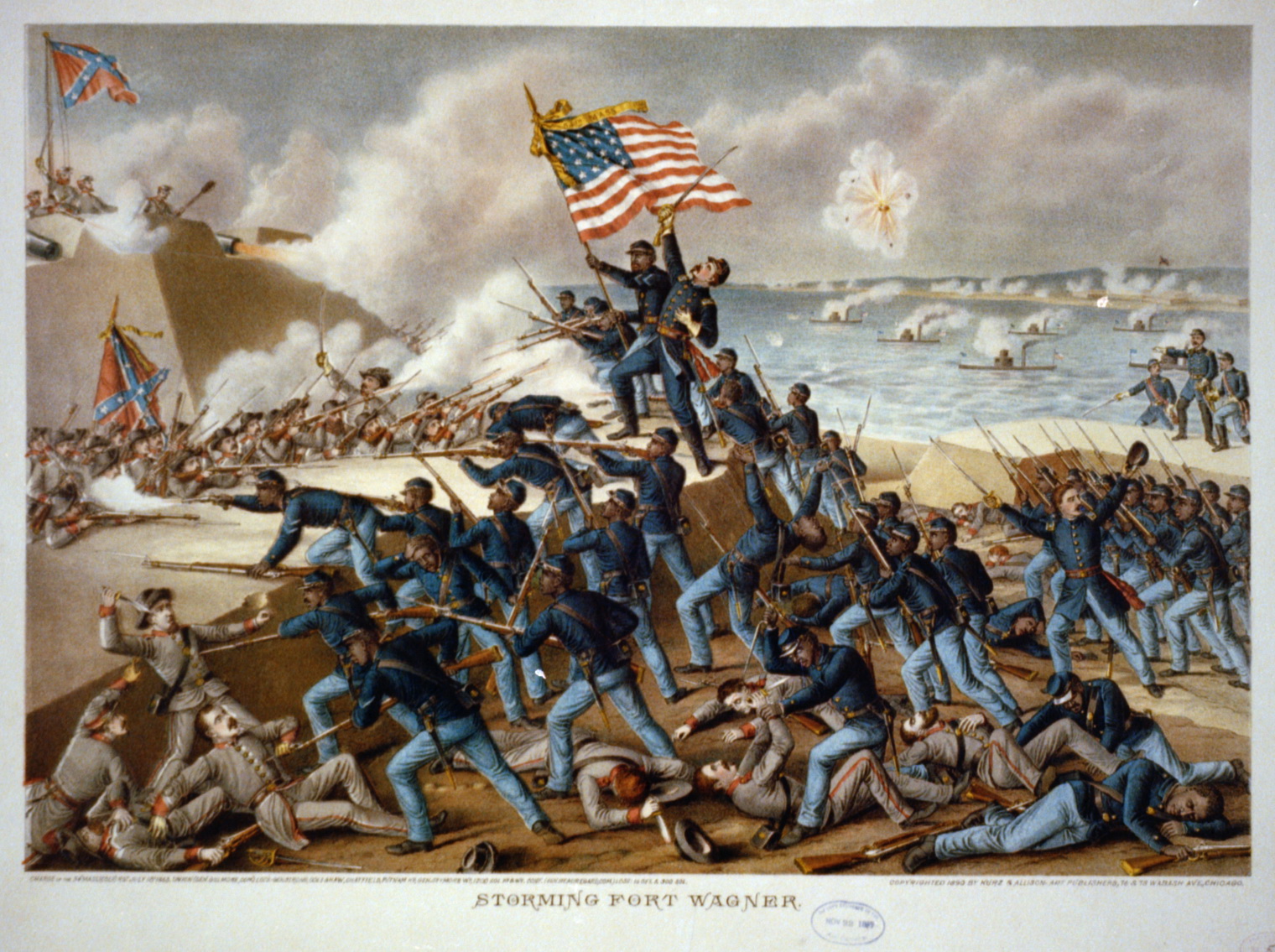|
P. G. T. Beauregard
Pierre Gustave Toutant-Beauregard (May 28, 1818 - February 20, 1893) was a Confederate general officer of Louisiana Creole descent who started the American Civil War by leading the attack on Fort Sumter on April 12, 1861. Today, he is commonly referred to as P. G. T. Beauregard, but he rarely used his first name as an adult. He signed correspondence as G. T. Beauregard. Trained in military and civil engineering at the United States Military Academy, West Point, Beauregard served with distinction as an engineer officer in the Mexican–American War. Following a brief appointment as superintendent of the U.S. Military Academy in 1861, and after Louisiana seceded, he resigned from the United States Army and became the first brigadier general in the Confederate States Army. He commanded the defenses of Charleston, South Carolina, at the start of the Civil War at Fort Sumter on April 12, 1861. Three months later he won the First Battle of Bull Run near M ... [...More Info...] [...Related Items...] OR: [Wikipedia] [Google] [Baidu] |
Mathew Brady
Mathew B. Brady ( – January 15, 1896) was one of the earliest photographers in American history. Best known for his scenes of the American Civil War, Civil War, he studied under inventor Samuel Morse, who pioneered the daguerreotype technique in America. Brady opened his own studio in New York City in 1844, and photographed Andrew Jackson, John Quincy Adams, and Abraham Lincoln, among other public figures. When the Civil War started, his use of a mobile studio and darkroom enabled vivid battlefield photographs that brought home the reality of war to the public. Thousands of war scenes were captured, as well as portraits of generals and politicians on both sides of the conflict, though most of these were taken by his assistants, rather than by Brady himself. After the war, these pictures went out of fashion, and the government did not purchase the master-copies as he had anticipated. Brady's fortunes declined sharply, and he died in debt. Early life Brady left little recor ... [...More Info...] [...Related Items...] OR: [Wikipedia] [Google] [Baidu] |
Battle Of Shiloh
The Battle of Shiloh (also known as the Battle of Pittsburg Landing) was fought on April 6–7, 1862, in the American Civil War. The fighting took place in southwestern Tennessee, which was part of the war's Western Theater. The battlefield is located between a church named Shiloh and Pittsburg Landing, which is on the Tennessee River. Two Union armies combined to defeat the Confederate Army of Mississippi. Major General Ulysses S. Grant was the Union commander, while General Albert Sidney Johnston was the Confederate commander. The Confederate army hoped to defeat Grant's Army of the Tennessee before it could be reinforced and resupplied. Although it made considerable gains with a surprise attack during the first day of the battle, Johnston was mortally wounded and Grant's army was not eliminated. Overnight, Grant's Army of the Tennessee was reinforced by one of its divisions stationed farther north, and it was also joined by portions of the Army of the Ohio. This second Uni ... [...More Info...] [...Related Items...] OR: [Wikipedia] [Google] [Baidu] |
Civil Engineering
Civil engineering is a professional engineering discipline that deals with the design, construction, and maintenance of the physical and naturally built environment, including public works such as roads, bridges, canals, dams, airports, sewage systems, pipelines, structural components of buildings, and railways. Civil engineering is traditionally broken into a number of sub-disciplines. It is considered the second-oldest engineering discipline after military engineering, and it is defined to distinguish non-military engineering from military engineering. Civil engineering can take place in the public sector from municipal public works departments through to federal government agencies, and in the private sector from locally based firms to global Fortune 500 companies. History Civil engineering as a discipline Civil engineering is the application of physical and scientific principles for solving the problems of society, and its history is intricately linked to advances in t ... [...More Info...] [...Related Items...] OR: [Wikipedia] [Google] [Baidu] |
Military Engineering
Military engineering is loosely defined as the art, science, and practice of designing and building military works and maintaining lines of military transport and military communications. Military engineers are also responsible for logistics behind military tactics. Modern military engineering differs from civil engineering. In the 20th and 21st centuries, military engineering also includes other engineering disciplines such as mechanical and electrical engineering techniques. According to NATO, "military engineering is that engineer activity undertaken, regardless of component or service, to shape the physical operating environment. Military engineering incorporates support to maneuver and to the force as a whole, including military engineering functions such as engineer support to force protection, counter-improvised explosive devices, environmental protection, engineer intelligence and military search. Military engineering does not encompass the activities undertaken by those ... [...More Info...] [...Related Items...] OR: [Wikipedia] [Google] [Baidu] |
Louisiana Creole People
Louisiana Creoles (french: Créoles de la Louisiane, lou, Moun Kréyòl la Lwizyàn, es, Criollos de Luisiana) are people descended from the inhabitants of colonial Louisiana before it became a part of the United States during the period of both French and Spanish rule. As an ethnic group, their ancestry is mainly of Louisiana French, West African, Spanish and Native American origin. Louisiana Creoles share cultural ties such as the traditional use of the French, Spanish, and Creole languages and predominant practice of Catholicism. The term ''Créole'' was originally used by the Louisiana French to distinguish people born in Louisiana from those born elsewhere, thus drawing a distinction between Old-World Europeans and Africans from their Creole descendants born in the New World.Kathe ManaganThe Term "Creole" in Louisiana : An Introduction, lameca.org. Retrieved December 5, 2013 [...More Info...] [...Related Items...] OR: [Wikipedia] [Google] [Baidu] |
Confederate States Of America
The Confederate States of America (CSA), commonly referred to as the Confederate States or the Confederacy was an unrecognized breakaway republic in the Southern United States that existed from February 8, 1861, to May 9, 1865. The Confederacy comprised U.S. states that declared secession and warred against the United States during the American Civil War: South Carolina, Mississippi, Florida, Alabama, Georgia, Louisiana, Texas, Virginia, Arkansas, Tennessee, and North Carolina. Kentucky and Missouri also declared secession and had full representation in the Confederate Congress, though their territory was largely controlled by Union forces. The Confederacy was formed on February 8, 1861, by seven slave states: South Carolina, Mississippi, Florida, Alabama, Georgia, Louisiana, and Texas. All seven were in the Deep South region of the United States, whose economy was heavily dependent upon agriculture—particularly cotton—and a plantation system that relied upon enslaved ... [...More Info...] [...Related Items...] OR: [Wikipedia] [Google] [Baidu] |
Battle Of Bentonville
The Battle of Bentonville (March 19–21, 1865) was fought in Johnston County, North Carolina, near the village of Bentonville, as part of the Western Theater of the American Civil War. It was the last battle between the armies of Union Maj. Gen. William T. Sherman and Confederate Gen. Joseph E. Johnston. As the right wing of Sherman's army under command of Maj. Gen. Oliver O. Howard marched toward Goldsboro, the left wing under command of Maj. Gen. Henry W. Slocum encountered the entrenched men of Johnston's army. On the first day of the battle, the Confederates attacked the XIV Corps and routed two divisions, but the rest of Sherman's army defended its positions successfully. The next day, as Sherman sent reinforcements to the battlefield and expected Johnston to withdraw, only minor sporadic fighting occurred. On the third day, as skirmishing continued, the division of Maj. Gen. Joseph A. Mower followed a path into the Confederate rear and attacked. The Confederates wer ... [...More Info...] [...Related Items...] OR: [Wikipedia] [Google] [Baidu] |
Second Battle Of Petersburg
The Second Battle of Petersburg, also known as the Assault on Petersburg, was fought June 15–18, 1864, at the beginning of the Richmond–Petersburg Campaign (popularly known as the Siege of Petersburg). Union forces under Lieutenant General Ulysses S. Grant and Major General George G. Meade attempted to capture Petersburg, Virginia, before General Robert E. Lee's Confederate Army of Northern Virginia could reinforce the city. The four days included repeated Union assaults against substantially smaller forces commanded by General P. G. T. Beauregard. Beauregard's strong defensive positions and poorly coordinated actions by the Union generals (notably Major General William F. "Baldy" Smith, who squandered the best opportunity for success on June 15) made up for the disparity in the sizes of the armies. By June 18, the arrival of significant reinforcements from Lee's army made further assaults impractical. The failure of the Union to defeat the Confederates in these actions res ... [...More Info...] [...Related Items...] OR: [Wikipedia] [Google] [Baidu] |
Second Battle Of Fort Sumter
The Second Battle of Fort Sumter was fought on September 8, 1863, in Charleston Harbor. Confederate General P. G. T. Beauregard, who had commanded the defenses of Charleston and captured Fort Sumter in the first battle of the war, was in overall command of the defenders. In the battle, Union forces under Major General Quincy Gillmore attempted to retake the fort at the mouth of the harbor. Union gunners pummeled the fort from their batteries on Morris Island. After a severe bombing of the fort, Beauregard, suspecting an attack, replaced the artillerymen and all but one of the fort's guns with 320 infantrymen, who repulsed the naval landing party. Gillmore had reduced Fort Sumter to a pile of rubble, but the Confederate flag still waved over the ruins. Background Union efforts to retake Charleston Harbor began on April 7, 1863, when Rear Admiral Samuel Francis Du Pont, commander of the South Atlantic Blockading Squadron, led the ironclad frigate ''New Ironsides'', the tower ... [...More Info...] [...Related Items...] OR: [Wikipedia] [Google] [Baidu] |
Second Battle Of Charleston Harbor
The Second Battle of Charleston Harbor, also known as the siege of Charleston Harbor, siege of Fort Wagner, or Battle of Morris Island, took place during the American Civil War in the late summer of 1863 between a combined U.S. Army/Navy force and the Confederate defenses of Charleston, South Carolina. Background After being repulsed twice trying to take Fort Wagner by storm, Maj. Gen. Quincy Adams Gillmore decided on a less costly approach and began laying siege to the fort. Opposing forces Union Confederate Siege Innovations and difficulties In the days immediately following the second battle of Fort Wagner, Union forces besieged the Confederate works on Morris Island with an array of military novelties. Union gunners made use of a new piece of artillery known as the Requa gun—25 rifle barrels mounted on a field carriage. While sappers dug zig-zag trenches toward Fort Wagner a second novelty was used—the calcium floodlight. Bright lights were flashed upon the defend ... [...More Info...] [...Related Items...] OR: [Wikipedia] [Google] [Baidu] |
Second Battle Of Fort Wagner
The Second Battle of Fort Wagner, also known as the Second Assault on Morris Island or the Battle of Fort Wagner, Morris Island, was fought on July 18, 1863, during the American Civil War. Union Army troops commanded by Brig. Gen. Quincy Gillmore launched an unsuccessful assault on the Confederate fortress of Fort Wagner, which protected Morris Island, south of Charleston Harbor. The battle came one week after the First Battle of Fort Wagner. Although a Confederate victory, the valor of the Black Union soldiers in the battle was hailed, which had long-term strategic benefits in encouraging more African-Americans to enlist allowing the Union to employ a manpower resource that the Confederacy could not emulate for the remainder of the war. Background Fort Wagner, or Battery Wagner as it was known to the Confederates, controlled the southern approaches to Charleston Harbor. It was commanded by Brigadier General William B. Taliaferro. An attempt was made on July 11 to assault th ... [...More Info...] [...Related Items...] OR: [Wikipedia] [Google] [Baidu] |









